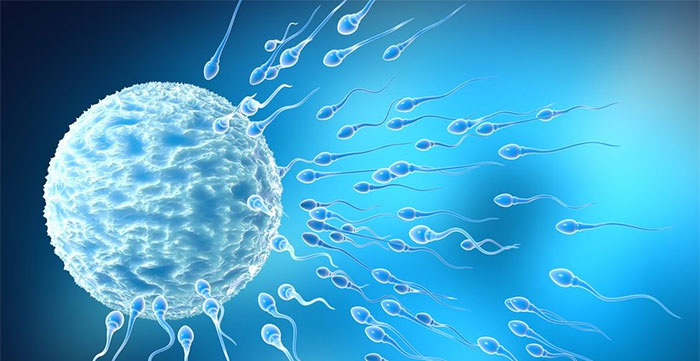Scientists discover how to 3D print testicular cells
University of British Columbia (UBC) scientists have 3D printed human testicular cells and identified promising early signs of sperm production.
The researchers, led by UBC assistant professor of urology, Dr Ryan Flannigan, hope the technique will one day offer a solution for people living with current forms of male infertility that don't. treatable.
'Infertility affects 15 per cent of couples, and the male factor is a contributing factor in at least half of those cases,' says Dr Flannigan, whose lab is based at the Line Center Vancouver prostate at Vancouver General Hospital said.

This technique will offer a solution to people who are living with untreatable forms of male infertility.
"We are 3D printing these cells into a very specific structure that mimics human anatomy, which we think is the best way to stimulate sperm production. could open the door to new fertility treatments for couples who currently have no other options."
In the human testicles, sperm are produced by small tubes called semi-coniferous tubes. In the most severe form of male infertility, known as nonobstructive azoospermia (NOA), no sperm is found during ejaculation due to decreased sperm production in these structures.
While in some cases, doctors can help NOA patients by performing the extremely rare spermatozoa surgery, Dr. Flannigan says the procedure is successful only about half the time.
"Unfortunately, for the other half of these individuals, they don't have any options because we can't find sperm for them."
Those are the patients that Dr. Flannigan's team hopes to help.
For the recent study, researchers performed biopsies to collect stem cells from the testicles of a patient living with NOA. The cells were then cultured and 3D printed onto a petri dish into a hollow tubular structure resembling the semi-coniferous tubes that produce sperm.
Twelve days after printing, the team found that the cells had survived. Not only that, they have matured into a number of specialized cells involved in sperm production and are showing significant improvements in spermatogenesis stem cell maintenance - both early markers of spermatogenesis. ability to produce sperm. The results of the study were recently published in the journal Fertility and Infertility Science.
Dr Flannigan said: "It's an important milestone to see these cells survive and begin to differentiate. There's a long way to go, but this gives our team great hope. ".
The team is currently working to "train" the printed cells to produce sperm. To do this, they expose cells to different nutrients and growth factors, and refine their structural arrangements to facilitate cell-to-cell interactions. cell.
If they can get the cells to produce sperm, those sperm could be used to fertilize eggs with in vitro fertilization, providing a new infertility treatment option for women with infertility. a couple.
Dr. Flannigan's research program has also elucidated the genetic and molecular mechanisms that contribute to NOA generation. They used different single-cell sequencing techniques to understand gene expression and characteristics of individual cells, and then applied computational modeling of this data to better understand the root cause. roots of disease conditions and identify new treatment options. The work is highly collaborative, involving UBC researchers in computer science, mathematics and engineering, as well as international collaborations.
Dr Flannigan said: 'Increasingly, we know that there are many different causes of infertility and each case is very specific. With that in mind, we're taking a personalized, precision medicine approach - we take cells from patients, try to understand what abnormalities are unique to them, then 3D printing and supporting the cells in a way that corrects those original defects."
- Testicular cancer: Causes, symptoms and treatment
- 96% of cases of testicular cancer have been cured
- Print 3-D stem cells with inkjet cartridges
- New findings related to testicular cancer, heart disease
- Print blood cells with 3D technology
- Higher men are more likely to get testicular cancer
- Tiny visions made from 3D printing technology
- 30-year-old woman found with testicular cancer
- Scientists have created 3D printing school meals
- Infertility due to testicular atrophy because of mumps
- Concussion detection: Zika virus causes testicular atrophy to 90%
- Discover new brain cells
 'Barefoot engineer' invents a pipeless pump
'Barefoot engineer' invents a pipeless pump Process of handling dead pigs due to disease
Process of handling dead pigs due to disease Radiometer
Radiometer Warp Engine: Technology brings us closer to the speed of light
Warp Engine: Technology brings us closer to the speed of light